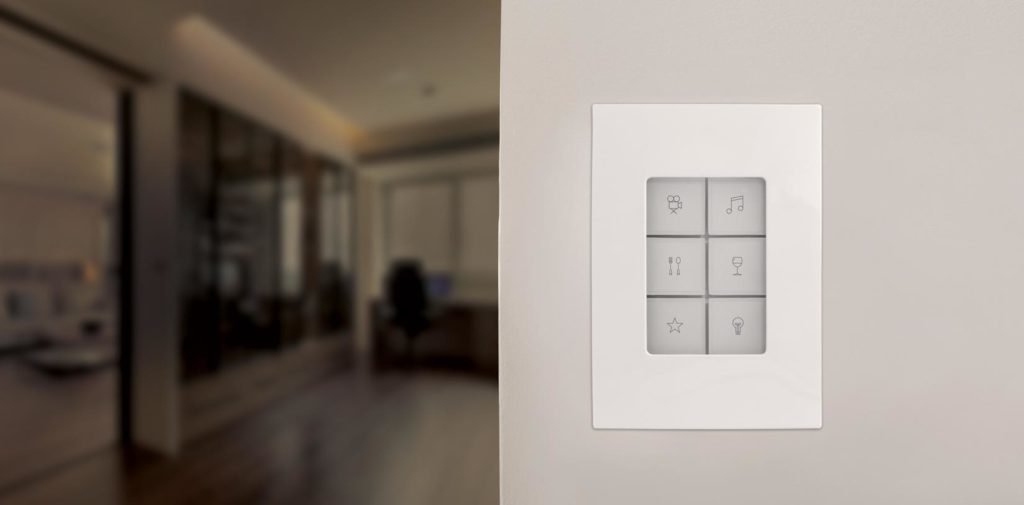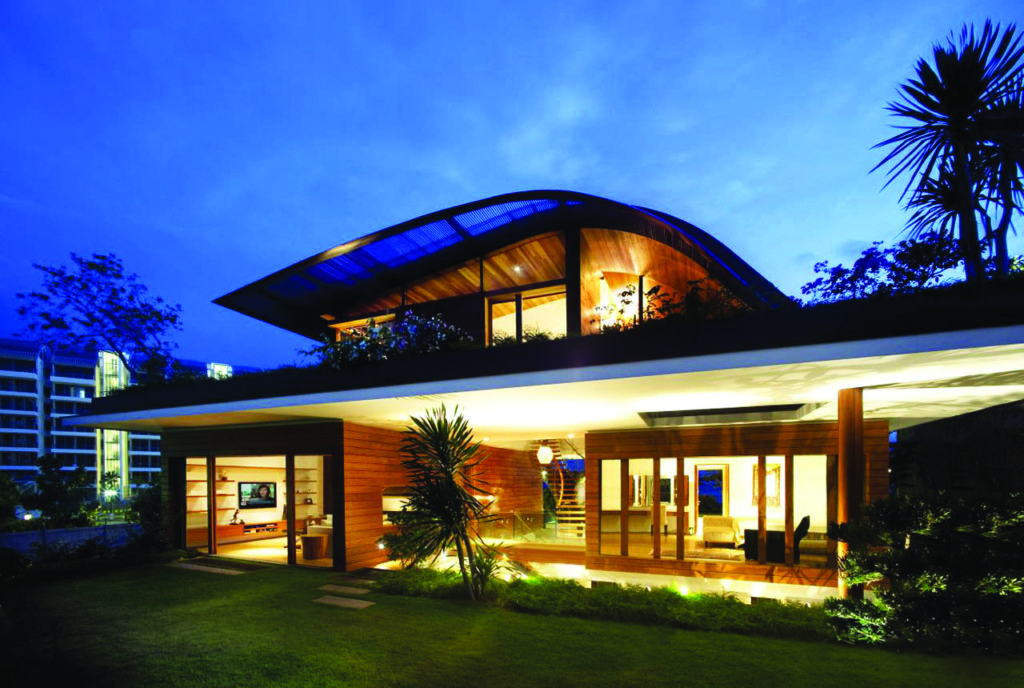Here’s five great reasons to use intelligent solutions in your residential lighting automation projects
What are the biggest differences in the residential lighting market? Every day, thousands of consumers go out in search of the best options for their construction projects. Most do it on their own, while others bet on the experience of a good architect or lighting designers.
When making a choice, the reasons are diverse. There are those who bet on the aesthetic part, considering only the models of luminary, beauty, and luminance color. On the other hand, are customers concerned about energy saving, considering the good performance of their energy systems.
In this scenario, companies and lighting stores must focus on offering the best products and proper technical installation. In addition, it’s became essential to be differentiated from the new trends in the areas of technology and sustainability in architecture. A lot of work!
How could innovation and energy savings be combined in one solution?
In recent years, residential lighting automation has offered all these qualities. With the intelligent management of electrical charges, automation systems have been gaining international prominence as sustainability and comfort technology in the residential space.
In today’s article, we will highlight five benefits that residential lighting automation can bring to your projects. Learn why selling and installing home automation can be a lucrative path for future integrators in the coming years.
INTEGRATION OF RESIDENTIAL LIGHTING AUTOMATION WITH OTHER SYSTEMS

Undoubtedly, the greatest advantage of residential lighting automation is its long-term profitability through aggregate product sales. Here, we are referring to its capacity for the progressive incorporation of new domotic subsystems. In a same project, it is possible to centralize all the residential command under the same structure of modules or intelligent plants.
Through wireless technology or distributed network, the residential lighting automation project supports new installations. Audio and video equipment, security, motorized curtains, and air conditioners are integrated by means of automation peripherals. In addition, sensors for activation, capture of changes in the environment and load control modules are installed in the residence.
Once integrated, it is possible to control and manage the operation of all automated home equipment. These are called automation scenes, sets of commands preconfigured in applications by integrators or home users.
In this way, automating lighting becomes just the “gateway” of the professional in a market of multiple opportunities! All the knowledge acquired with the residential lighting automation provides minimal technical support, which interacts effectively with the scalability nature of the solutions and the new needs of the customers.
That is, consequently, it becomes attractive to the integrator to create flexible automation projects for users. Since the increase in value associated with automation – comfort, status, innovation – are subjective, they become even more appealing when systems prove to be efficient. Especially if efficiency is translated in terms of cost and earnings on the initial investment.
ENERGY SAVINGS = LONG-TERM ROI

Investment in residential lighting automation can be rewarded in the long run through energy efficiency. It is estimated that integrated systems can recover 10 to 30% of the initial value, from a non-conservative perspective of the data. Above all, these factors will depend on the type of automation used, limitations of electrical design and the amount of integrations.
Popularization tends to lower this cost even more, since not all automation brands and protocols are present in the market.
The gains are even more favorable when dealing with retrofit projects , aimed at updating cabling networks. Although the initial investment is more expensive, it has a high durability (on average, 50 years) and can value a property up to 20% of its initial value.
By retaining the original design features, the older buildings benefit most from the retrofit ROI. Especially because the systems allow for more ubiquitous automation options – especially wireless – that reduce demolition and remodeling costs. In addition, it favors the builder, as many buildings undergo legal restrictions for deeper modifications in their architectural designs.
If we limit only the automation of residential lighting itself, the cost-benefit is even more advantageous. With the simple use of peripherals for dimerization and economic lighting, it is possible to offer an innovative solution to the customer. On the one hand, optimizing the consumption of resources and on the other hand, maintaining the ability to customize the project.
CUSTOMIZATION WITH RESIDENTIAL LIGHTING AUTOMATION

The use of residential lighting automation systems also extends to the creative possibilities for lighting designers and architects. Mainly, because together with the automation all the space of the architectural project can be rethought in a more conceptual and personalized way. Mainly, if created in an integrated way, linked to the work of other construction professionals.
In general, the residential lighting automation project is still in the construction phase. Created in conjunction with electrical designers, its competence is to distribute the entire network and its peripherals in the most appropriate way to the customer’s profile. Although the professional places his “mark” on the project, all planning is preceded by the mapping of electric performance, history, and interview with the user.
The positive point of the whole process lies in the ability of the intelligent lighting system to meet both needs. First, it helps the integrator to customize the spaces individually, with the level of lighting required for each environment. Not least, it provides the consumer with an inventory of possibilities to customize their rooms, without harming the performance of lighting.
For example, let’s think of multitasking areas of the house, such as living rooms. Thanks to the use of sensors, dimerization and the control of scenes, the functionalities of the environment can be adapted to the events occurred in that environment.
- Automatic activation, according to the reduction of the insolation at the end of the afternoon;
- Customized scenes for special occasions;
- Presence simulation, for residential security purposes;
- Full power-saving shutdown in addition to stand-by (master off).
In addition to room lighting projects, home automation allows more resources for elaboration of specific architectural designs. For example, lighting adaptation for home office environments, so-called home offices. The possibilities are endless for the integrator!
QUALITY AND LIFESTYLE
Leaving the field of creativity, the use of residential lighting automation also helps in improving the quality of life for the user.
When we think about lighting projects, we cannot let go of their influence on the residents of the residence. The light of the spaces has direct importance in the quality of life of the inhabitants, affecting the performance and tolerance to their daily activities of the house. There are several actions performed throughout the day, most of them exposed to artificial light.
Often, when projects are played without the participation of designers and architects, various lighting mistakes are made. Consumers – because they do not have technical skills – only turn to power as a crucial factor in choosing lighting products. Much of this “myth” is also misused as a criterion of energy saving.
Mistakes can be costly in the future. Eventually, inadequate lighting for task performance impairs visual health, increases irritability and discomfort. In other hand, these projects disregard the use of natural light, which would facilitate energy savings.
To solve these issues, we highlight how automation systems work in complete synergy with the project challenges. Not only considering automated lighting – through dimerization itself – but in integrating with other home subsystems. For example, we highlight how motorized curtains play an essential role in the system, adapting its operation to radiated sunshine over the house.
Working in sync with weather conditions and residents’ routines, smart home contributes to the user’s comfort, reducing the impact of consumption on the environment.
ADAPTATION TO THE CONDOMINIUM AUTOMATION MARKET

Finally, we highlight that the residential lighting automation offers the future probability of expansion for the activities of the integrator in condominium automation. Through the same components offered in the automation of single environments, it is possible to automate collective and external areas of buildings.
There are lighting control products that only include autonomous systems with on, off and dimerization functions. In another industry, products designed for residential security focus only on cameras, sensors, and alarms.
In contrast, intelligent solutions allow you to centralize automation in a single command system. After proper technical installation, all subsystems and their operating status will be available in automation applications. Depending on the solution, the control also extends to garden irrigation, garage access and gates.
CONCLUSION
The residential lighting automation market is differentiating itself. Today, with the increasing integration capability of national solutions, integrators can offer a complete residential management service. There are dozens of configuration possibilities that put all potential equipment control in the hands of the end user.
In the coming years, with environmental preservation even more on the agenda, intelligent lighting systems will become essential in construction. By their easy insertion in the sustainable architecture, the solutions will have an increasing demand of projects in the long term. It’s up to the integrator to get organized right away, qualifying technically and commercially for good profit prospects in the future.
If you enjoyed this post please feel free to share it on your social media pages! We always appreciate the gesture and it helps get great content out to more people!